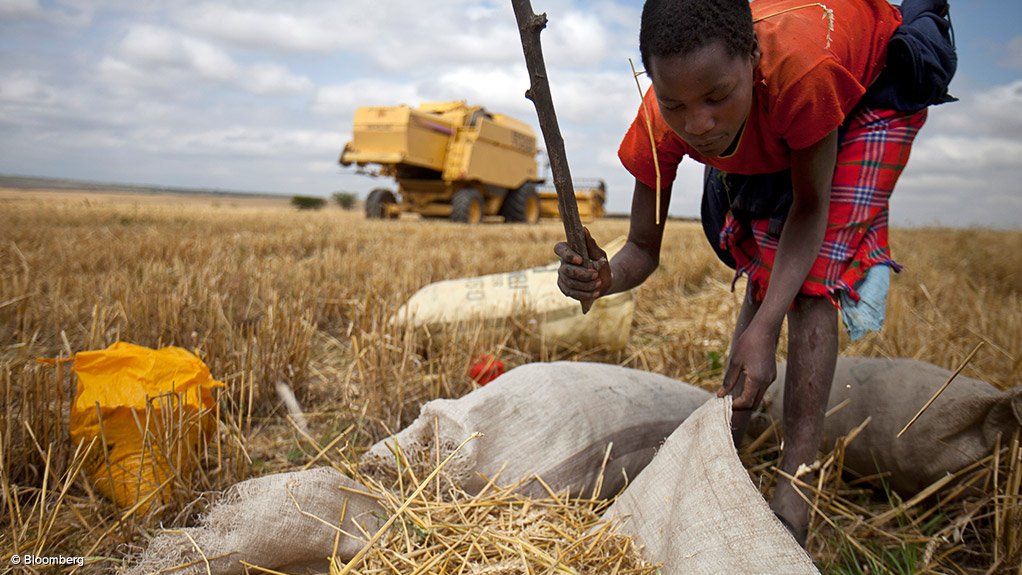China’s investment in African resources remains at a relatively early stage and is likely to increase further over the next decade, despite the economic slowdown in the world’s second-largest economy, reports South African financier Standard Bank.
China’s economy grew by 7.4% in 2014, the slowest pace in 24 years, and down from a five-year average of about 10%, as the nation’s property market cooled and institutions ranging from State-owned companies to local governments were weighed down by debt.
The country was transitioning from a high-growth phase, driven by abundant capital and cheap labour to a more mature phase, in which continued growth would depend on productivity gains and increased business efficiency. “These will, in turn, be underpinned by ‘creativity’ and ‘innovation’ in the way Chinese companies and State-owned enterprises conduct business within the trade route and across Africa,” Standard Bank said.
“Notwithstanding the more than 2 500 Chinese companies that are already operating in Africa, the country’s institutions have significantly elevated their appetite to invest in the continent.
“This is evidenced by data from the Chinese Ministry of Commerce showing that the nation’s outbound foreign direct investment (OFDI) flows to Africa increased nearly eight times, from $317-million in 2004, to $2.52-billion in 2012,” Standard Bank’s Beijing-based mining and metals head Dr George Fang pointed out.
He further noted that Africa was an increasingly important priority for Chinese companies looking to invest in the continent, especially those with a strategic interest in metals and mining and related infrastructure, such as power, roads, railways and ports.
“Over the next five to ten years, we’re likely to see even more investment by Chinese firms looking to tap Africa’s resource superstructure, as well as other sectors.”
This is aligned with the macroeconomic long-term view of China’s economic trajectory and vision of Beijing's leaders. Consider, for example, an economic belt called ‘The New Silk Road’.
“This trade route runs from China, broadly westward through central Asia, and includes the Pacific maritime trade routes to Europe. This vision was articulated by the Chinese government in 2013 as a roadmap to further integrate China into the world economy and it emphasises Africa’s geostrategic and commodity-rich significance.
“Africa is central as both a conduit and destination within this trade route and the renminbi is foremost in leading transactional value along the route,” he added.
Although China’s demand for commodities would slow in coming years, as the economy continues to consolidate at a new normal, Fang believed the country’s OFDI was likely to increase as Chinese companies continued to secure new mineral assets.
“China is going to become an increasingly important capital exporting country in coming years, which is likely to drive further investment in African mining,” said Fang.
“In line with OFDI growth, Chinese companies’ outbound merger and acquisition activity has experienced rapid growth with a compound annual growth rate of over 33% since 2004.”
While China’s State-owned-entities have led this investment, an increasing number of private enterprises are taking part in the OFDI boom, accounting for no less than 37% of the total nonfinancial OFDI in 2013. “The way in which private and State-owned enterprises from China are doing business, is adapting to regional dynamics across the continent,” Fang added.
Although energy and metals are still the largest targets of Chinese OFDI, rapid increases are also being observed in agriculture, he noted.
Chinese banks also remained significant lenders to projects on the continent, as evidenced by China Exim Bank’s decision in May 2014 to provide 90% of the $3.8-billion project cost to build a 609 km railway line linking the Kenyan port city of Mombasa to Nairobi, Uganda, Rwanda, Burundi and South Sudan.
“China has been rapidly expanding its global footprint via international acquisitions as it gradually evolves into a capital exporting country,” said Fang.
“The economic slowdown of growth in China is unlikely to hinder global commerce but it is likely to unlock further opportunities for African mining and other sectors.”
“Chinese interests are clearly set on a path of one road, one belt and now we could add ‘one continent’. In fact, China’s investment in Africa is already well down the road and it’s not just about resources,” he stated.
EMAIL THIS ARTICLE SAVE THIS ARTICLE
To subscribe email subscriptions@creamermedia.co.za or click here
To advertise email advertising@creamermedia.co.za or click here











